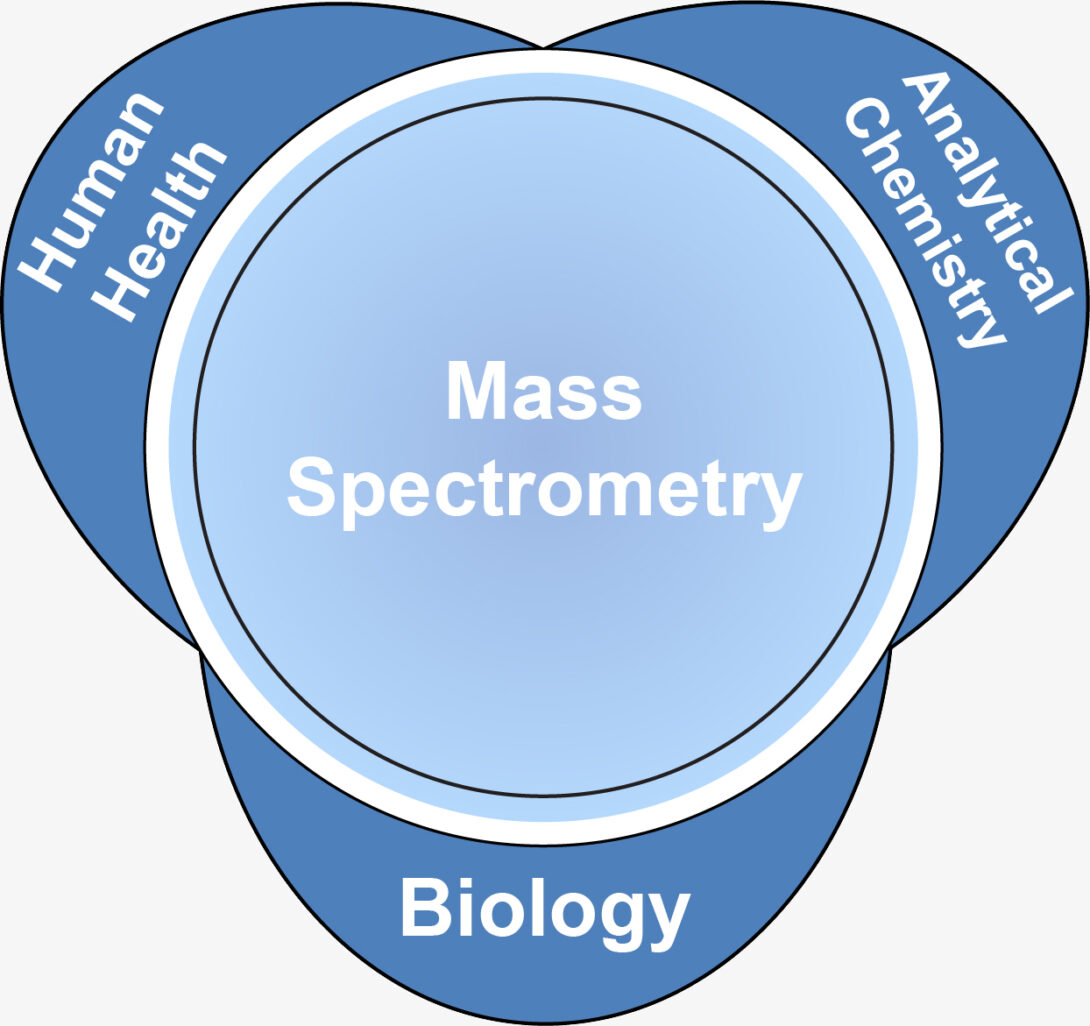
Stephanie Cologna
Associate Professor, Associate Director of Graduate Studies, and Associate Vice Chancellor for Research (STEM)
Contact
Address:
5414 SES, MC 111
Office Phone:
Email:
Related Sites:
About

Research in the Cologna group is focused at the intersection of chemistry, biology and human medicine. Specifically, we are interested in using state-of-the-art mass spectrometry and allied analytical techniques to answer chemical and biological questions important to understanding and treating human diseases. Mass spectrometry has emerged as a powerful tool to study a range of biomolecules including peptides, proteins, lipids among others. With recent developments in ionization techniques and mass analyzers, the high-throughput detection and quantification of analytes has become feasible. To this end, we are interested in understanding neurodegenerative disorders including a subset of diseases called lysosomal storage diseases.
We are focused in three major research areas: (i) protein isoform characterization and quantification by mass spectrometry, (ii) mass spectrometry-based lipid measurements in neurodegenerative diseases and (iii) analytical method development and implementation of novel approaches to improve the detection of biomolecules. The overarching goal of this research is to develop tools which can be implemented to study biological pathways perturbed in human disease. Successful outcomes will lead to improved understanding of molecular and cellular processes and potentially lead to therapeutic options for various disorders.
Selected Publications
1.PPARα and PPARγ Signaling Is Enhanced in the Brain of the Naked Mole-Rat, a Mammal that Shows Intrinsic Neuroprotection from Oxygen Deprivation. Pergande MR, Amoroso VG, Nguyen TTA, Li W, Vice E, Park TJ, Cologna SM. J Proteome Res. 2021 Aug 5. doi: 10.1021/acs.jproteome.1c00131.PMID: 34351155
2. Characterization of the Cerebrospinal Fluid Proteome in Patients with Fragile X-Associated Tremor/Ataxia Syndrome. Abbasi DA, Nguyen TTA, Hall DA, Robertson-Dick E, Berry-Kravis E, Cologna SM. Cerebellum. 2021 May 27. doi: 10.1007/s12311-021-01262-7. PMID: 34046842
3. Mass spectrometry imaging of lipids: untargeted consensus spectra reveal spatial distributions in Niemann-Pick disease type C1. Tobias F, Olson MT, Cologna SM. J Lipid Res. 2018 Dec;59(12):2446-2455. doi: 10.1194/jlr.D086090. Epub 2018 Sep 28. PMID: 30266834
4. Quantitative, Label-Free Proteomics in the Symptomatic Niemann-Pick, Type C1 Mouse Model Using Standard Flow Liquid Chromatography and Thermal Focusing Electrospray Ionization. Pergande MR, Nguyen TTA, Haney-Ball C, Davidson CD, Cologna SM. Proteomics. 2019 May;19(9):e1800432. doi: 10.1002/pmic.201800432. Epub 2019 Apr 18. PMID: 30888112
5. Investigating Phosphorylation Patterns of the Ion Channel TRPM7 Using Multiple Extraction and Enrichment Techniques Reveals New Phosphosites. Nguyen TTA, Li W, Park TJ, Gong LW, Cologna SM. J Am Soc Mass Spectrom. 2019 Aug;30(8):1359-1367. doi: 10.1007/s13361-019-02223-5. Epub 2019 May 28. PMID: 31140077
6. Mass spectrometry imaging reveals ganglioside and ceramide localization patterns during cerebellar degeneration in the Npc1-/- mouse model. Tobias F, Pathmasiri KC, Cologna SM. Anal Bioanal Chem. 2019 Sep;411(22):5659-5668. doi: 10.1007/s00216-019-01989-7. Epub 2019 Jun 29. PMID: 31254056
7. Lipidomic Analysis Reveals Altered Fatty Acid Metabolism in the Liver of the Symptomatic Niemann-Pick, Type C1 Mouse Model. Pergande MR, Serna-Perez F, Mohsin SB, Hanek J, Cologna SM. Proteomics. 2019 Sep;19(18):e1800285. doi: 10.1002/pmic.201800285. Epub 2019 Aug 29. PMID: 31394590
8. Mass spectrometry imaging and LC/MS reveal decreased cerebellar phosphoinositides in Niemann-Pick type C1-null mice. Pathmasiri KC, Pergande MR, Tobias F, Rebiai R, Rosenhouse-Dantsker A, Bongarzone ER, Cologna SM. J Lipid Res. 2020 Jul;61(7):1004-1013. doi: 10.1194/jlr.RA119000606. Epub 2020 May 5. PMID: 32371566
Education
- B. S. 2005, University of Arizona
- Ph.D. 2010, Texas A&M University
- Postdoctoral Fellow, The National Institutes of Health